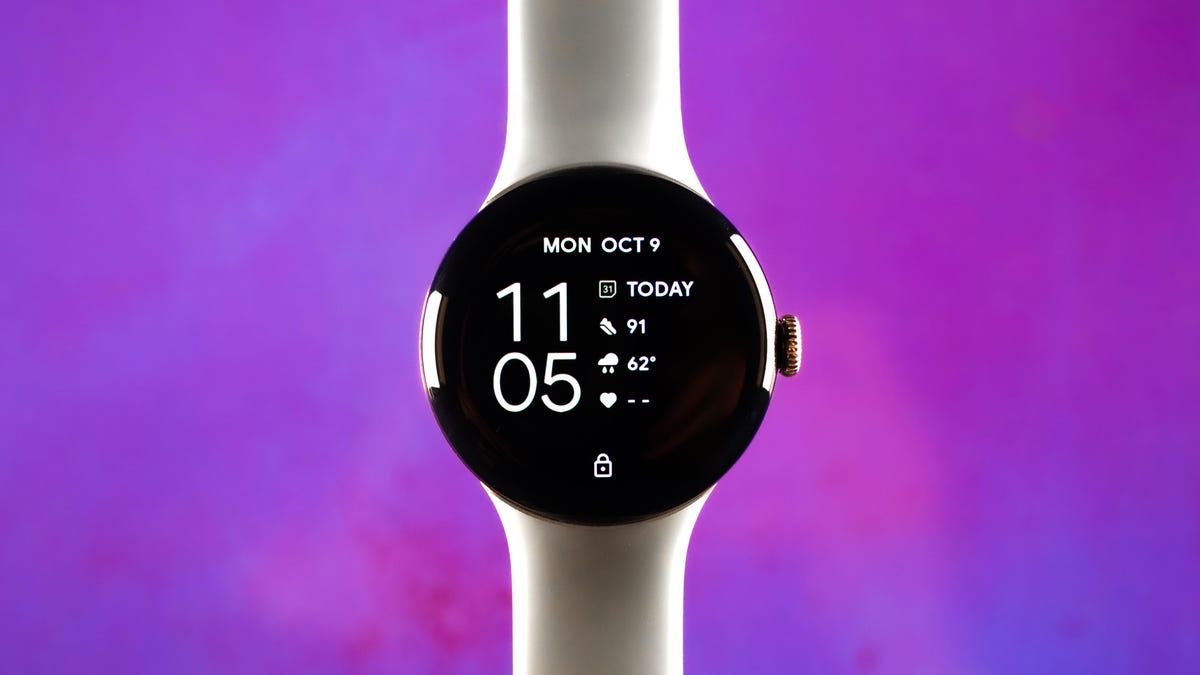How Google Could Make the Pixel Watch 3 the Smartwatch to Beat

Even though the Pixel Watch 2 was a significant upgrade over the original, there’s plenty of room for improvement in the Pixel Watch 3.
Among the biggest changes I hope to see this year is longer battery life. Google isn’t alone; achieving multiday battery life is a challenge for many smartwatch manufacturers, including Apple and Samsung. Yet as health tracking continues to become a bigger part of the appeal behind smartwatches, battery life that reliably lasts for more than a day or two is key. It would turn the Pixel Watch into a more capable sleep tracker, which is crucial for measuring wellness.
But battery life is just one way I hope to see the Pixel Watch improve with Google’s next model. More health readings that don’t require a Fitbit Premium subscription, new wellness metrics and additional size options are also on my list.
Google typically releases a new Pixel Watch and Pixel phones in October, so we’re expecting it to maintain that release schedule in 2024.
Read more: Smart Rings Are Picking Up Where Fitness Trackers Left Off
Longer battery life
Google Pixel Watch 2 with the charger attached
It seems like battery life will always be the Achilles heel of smartwatches. Like its main Apple Watch and Samsung Galaxy Watch competitors, the Pixel Watch 2 usually lasts for about a day on a single charge. But Google did make some improvements between the first- and second-gen Pixel watches by enabling the newer model to last for 24 hours with the always-on display activated. With that in mind, I hope to see more enhancements with the next version.
There’s another reason to be optimistic about the Pixel Watch 3’s battery life. Google recently made changes to the way its Wear OS operating system switches between the watch’s main processor and secondary low-power co-processor, which should boost power efficiency and extend battery life. Light tasks such as surfacing notifications from your phone should require less power. That’s good news for all Wear OS watches, not just Google’s next Pixel Watch, and we saw these improvements at work in the new OnePlus Watch 2.
This improved power efficiency combined with any updates Google may make to the Pixel Watch 3’s battery could result in a noticeable boost in longevity. And that’s important considering fitness tracking tools from Fitbit (which Google owns) play a big role in helping the Pixel Watch stand out from other Wear OS smartwatches. Sleep is a major part of the wellness equation, and it’s difficult to track slumber consistently if you have to charge your watch every night.
Another size option
The Google Pixel Watch 2.
Like its predecessor, the Pixel Watch 2 is available in one 41-millimeter size. That’s fine for someone like me, since I have a small wrist, but I imagine others may find the Pixel Watch 2’s screen too small. My former colleague Stephen Shankland said metrics can be hard to see on the Pixel Watch 2 when mountain biking, for example.
Other smartwatches are available in two sizes to accommodate different wrists. The Samsung Galaxy Watch 6, for example, comes in 40mm and 44mm size options, while Apple sells the Series 9 in 41mm and 45mm sizes. But Google isn’t the only one sticking with a single size. The OnePlus Watch 2 and TicWatch Pro 5 also only offer one option, although their respective watches skew on the larger side.
Google may in fact take a page from Samsung and Apple’s book with the next Pixel Watch. According to a report from 9to5Google, the Pixel Watch 3 will come in a new 45mm size option alongside the current 41mm size.
New big-picture health metrics
Workout options on the Pixel Watch 2.
Fitbit launched its Daily Readiness Score in 2021, which rates how rested you are based on factors like activity, sleep and heart rate variability. But in 2024, I’d like to see Google take that a step further to more clearly distinguish itself from rivals like Oura and Garmin.
The existing version of the Daily Readiness Score can already provide bits of advice that are tailored to your recent sleep and activity. For example, if your readiness is “good,” the app might recommend that you exercise moderately without overdoing it.
I think Fitbit could do more in this area with a broader type of rating that pulls in other data points like stress. Fitbit already has a separate Stress Management Score that shows how your body is handling stress, including how activity and sleep impact your stress levels. But it would be interesting to see a blanket metric that ties factors like readiness and stress levels together to paint a more comprehensive picture of your current state.
It’s unclear exactly what’s next for the Fitbit app, but Google is planning some big changes for this year. Fitbit Labs, a program that will use AI to further connect the dots between health data points, will arrive for Fitbit Premium members later in 2024. With Fitbit Labs, you’ll be able to ask questions like why a run felt more difficult today compared to yesterday, as the company mentioned in its Made by Google keynote last year when introducing the program.
But in a more recent conversation with CNET, Google’s Ajay Surie also said the tech could be used to help Fitbit users establish fitness goals.
“We also see a huge potential for AI to help us drive the right recommendations for the goals you want to set,” he said. “Because one of the biggest problems that we see in health, and I have this problem too, is getting users to stay focused and sticking with what they’re trying to achieve.”
More without Fitbit Premium
Google Pixel Watch 2 and Google Pixel 8 with the Fitbit app.
With the free Fitbit app, you can still track activity, sleep and heart rate and view some trends related to your health metrics. But many of the holistic data points that provide more context require a Fitbit Premium subscription, which costs $10 per month. The Daily Readiness Score mentioned above is only available with a subscription, for example, as is Fitbit Labs and Fitbit’s monthly personalized sleep analysis tool. While you can see your sleep and stress scores without Premium, you need a subscription to get the full breakdown behind those ratings.
Charging a subscription for health and fitness coaching services isn’t uncommon. Oura similarly charges $6 a month, and the Whoop band requires a hefty $239 annual membership. But I’d like to see Google provide more under the free tier, even if it’s just a watered-down version of the Daily Readiness Score.
Doing so would make the Pixel Watch a more useful fitness tracker out of the box, which is important now that Google is facing new competition from OnePlus and Samsung. Both companies make Wear OS watches but don’t require a subscription for any of their health tracking features. Samsung is also launching new wellness metrics like My Vitality Score and Booster Cards in the Samsung Health app later this year.
A smarter assistant
Google’s AI assistant Gemini introduces itself on a phone.
Google already brought its Gemini AI model to smartphones, and I hope smartwatches are next. The current version of the Google Assistant is already plenty responsive and comes in handy for tasks like setting timers, checking the weather and quickly starting a workout. But there are plenty of ways I could see a more advanced assistant being useful on a smartwatch.
What if a more powerful version of the Google Assistant could summarize incoming notifications or emails for you, rather than just surfacing them on your wrist? With a screen as small as the Pixel Watch’s, having an assistant that can cut down on the number of times you have to tap, swipe and scroll is important. And a smarter version of the Google Assistant would likely do just that.
But after Gemini’s image creation tool came under fire for creating images of people that were historically inaccurate, it wouldn’t be surprising for Google to slow down its expansion to new devices.
Longer software support
Google Pixel Watch 2 and Google Pixel 8
Google provides three years of software updates for the Pixel Watch. While that’s not terrible, the company offers much longer support for its Pixel phones. The Pixel 8 family will get new versions of Android for seven years, which makes the Pixel Watch’s three-year timeline seem short by comparison.
Smartphones are a much more critical part of everyday life compared to smartwatches, so it makes sense that Google would support Pixel phones for a longer period of time. Still, I’d at least like to see Google match Samsung, which supports its Galaxy Watch 6 lineup with five years of software updates.
Only Google knows what’s next for the Pixel Watch and its other products. But a long-lasting Pixel Watch with more advanced health tracking and a smarter virtual assistant would make Google’s next watch the one to beat.
Source: CNET














